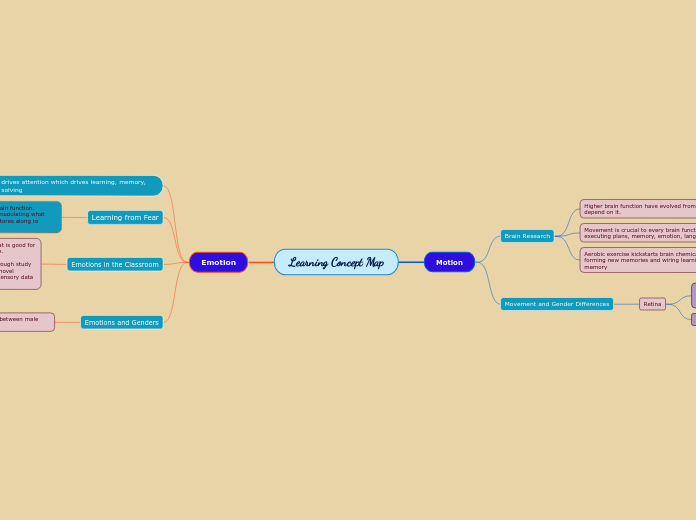Learning Concept Map
Motion
Brain Research
Higher brain function have evolved from movement and still depend on it.
Movement is crucial to every brain function including planning, executing plans, memory, emotion, language, and learning
Aerobic exercise kickstarts brain chemicals essential for forming new memories and wiring learning into long-term memory
Movement and Gender Differences
Retina
Males: Larger and thicker magnocelluar cells. Act like a motion detector and track objects anywhere in the field of vision. Making their eyes structured for motion.
In the classroom: Looking outside, looking at the door, watching anything that moves, watching the classroom action
Females: Smaller and thinner. Ability to focus and be centered.
Ability to focus on details, lectures and worksheets.
Emotion
Emotion drives attention which drives learning, memory, problem solving
Learning from Fear
*Emotions are a function of entire body brain function.
* Emotions filter incoming sensory input, modulating what cerebral cortex attends to processes and stores along to memory
Emotions in the Classroom
* Prefrontal cortex the function is to calculate what is good for the organism compared to calculating what is true.
* Providing opportunities for full sensory input through study tip or being their experiences allows students to novel solutions to problems or situations and take and sensory data from a variety of sources
Emotions and Genders
Positive and negative emotions are different between male and female.
Females are eager to do work even if it is not an interest to them. Boys are less likely to do the work is there is not an interest to them.
Stress: Improves preformance in males while doing the opposite in females.
